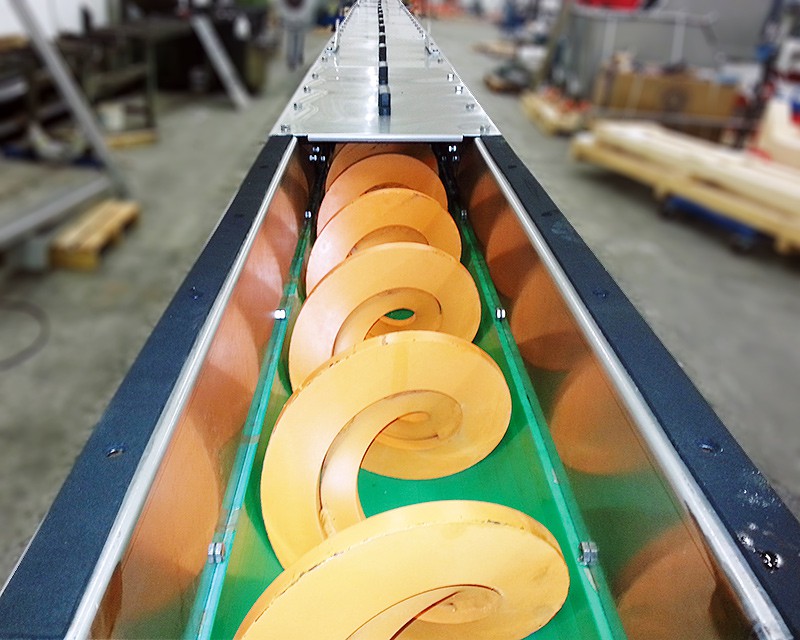
DESCRIPTION AND WORKING PRINCIPLES
Shaftless screw conveyors consists of a screw, without internal shaft, driven by a power transmission, rotating inside a trough carrying material loaded through one or more hoppers, to one or more exhaust ports, possibly equipped with shutoff sliding valve. The machine can be in a “pull” configuration, i.e. it pulls the material from the towards the outlet, being the drive after the outlet spout, or in a “push” configuration when the material is pu-shed by the spiral towards the drain. The power transmission can be direct, with the gearbox’s output shaft directly connected with the screw flange, or it can be a system consisting of motor drive system – chain – flanged shaft connected with the screw.
Shaftless screw conveyors are suitable to tran-sport clogging materials, such as sludges or screenings, which otherwise would tend to stick to the shaft of the screw. The working range of the conveyor is typically between 0° and 30°, with decreasing efficiency proportional to the increasing inclination.
MANUFACTURING FEATURES
- A trough with bolted covers made of stainless steel AISI 304 or AISI 316
- A shaftless screw, in Carbon Steel, AISI 304 or AISI 316
- One or more hoppers inlet, depending on the application
- One or more discharge outlets (only one in the case of axial discharge / even more in case of a vertical discharge)
- A motor that can be push or pull type
The material to be conveyed is transported by the screw which rotates on antiwear bars or on high density molecular polyethylene, depending on the type of material to be transported. The screws can be supplied with single or double spiral. The screw conveyor model X-CONV are formed from sections bolted as regards of parts subject to maintenance, and welded parts in the load-bearing structures, so as to ensure a high structural strength and a perfect hydraulic seal. The screw conveyor model X-CONV are ideal for the transport of solids usually difficult to manage, irregular and different from one another, including:
– Sand and granular substances in general
– Screenings
– Thickened and dewatered sludge
– Canned Foods
– Materials pasty or creamy
– Meat, fish, vegetable, fruit, vegetables
